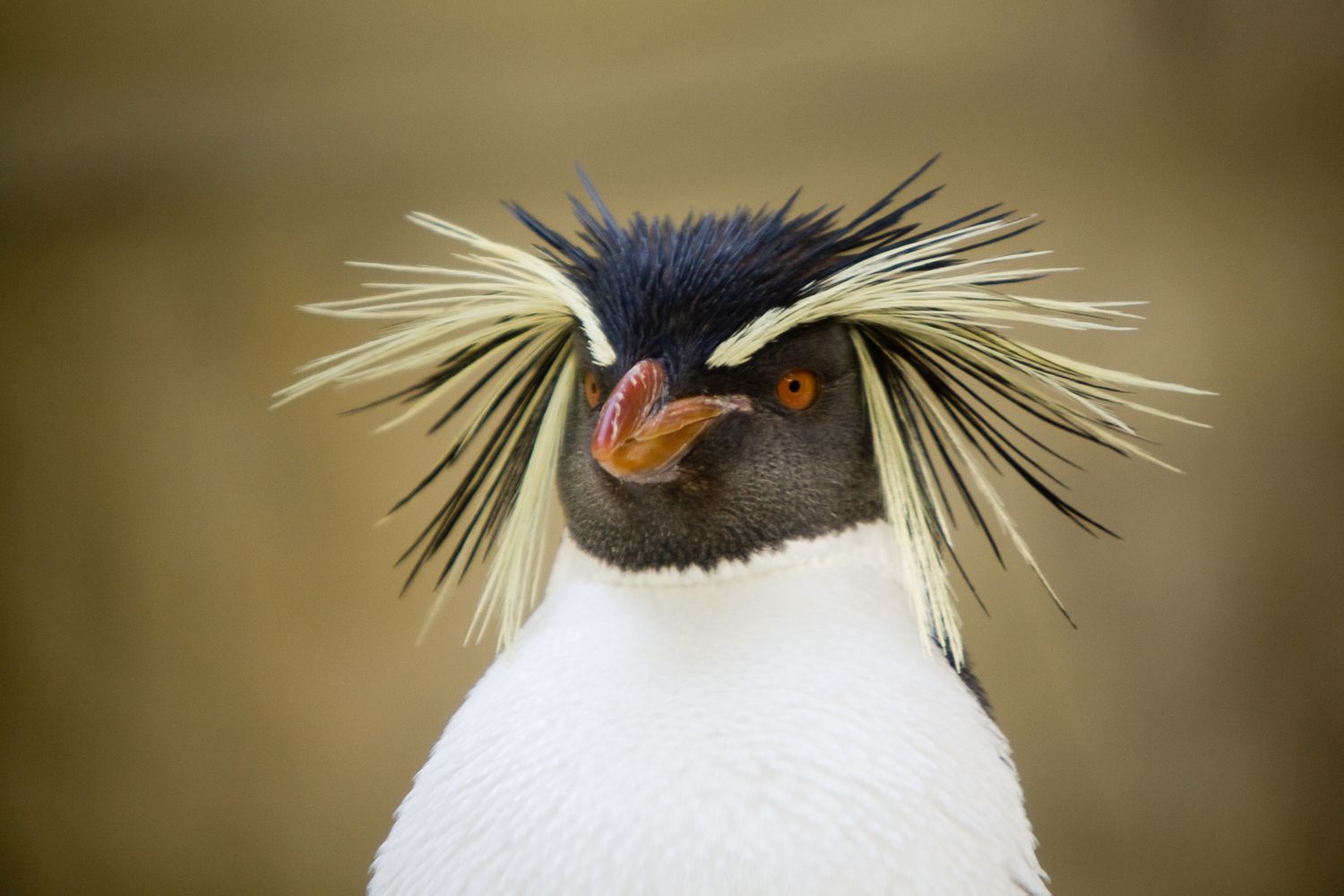Penguin Without Feathers : Unveiling the Vulnerable Beauty
by onleaves

“Penguin Without Feathers” is a humorous book by Woody Allen, filled with witty and absurd stories that showcase his unique style of humor. In this collection, Allen explores various scenarios and characters in a satirical manner, touching on subjects such as love, death, philosophy, and the human condition.
Through his clever storytelling and sharp wit, Allen provides a comical perspective on life and society, leaving readers entertained and amused. Whether you are a fan of Allen’s previous works or simply enjoy intelligent and offbeat humor, “Penguin Without Feathers” is definitely worth a read.

Credit: www.cnn.com
The Importance Of Penguin Feathers
The feathers of a penguin serve essential functions in helping these remarkable creatures adapt and survive in extreme environments. One key role of feathers is providing insulation, enabling penguins to maintain their body temperature in freezing waters. The unique structure of their feathers, with overlapping layers and a dense down layer, traps air close to their bodies, creating a protective barrier against the cold. This insulation is crucial for their survival in icy climates.
In addition to insulation, penguin feathers also contribute to buoyancy. By trapping air within their feathers, penguins effectively increase their buoyancy, allowing them to effortlessly float on water surfaces. This adaptation is particularly important for penguins when they spend extended periods swimming and diving for food.
Unveiling The Vulnerable Beauty
Evolutionary background reveals the fascinating story behind penguin feather loss. These flightless birds have adapted to their aquatic lifestyle over millions of years, evolving from their flying relatives. Penguins belong to the group of birds known as “ratites,” which also includes emus and ostriches. As penguins’ wings became more specialized for swimming, their feathers underwent significant changes, leading to reduced buoyancy and increased hydrodynamic efficiency.
The loss of feathers in penguins has immense significance for naturalists and researchers. This unique adaptation allows penguins to glide through the water with incredible agility and speed, enabling them to catch fish and evade predators efficiently. Furthermore, the absence of feathers minimizes drag, conserving energy during long dives. By studying the molecular and genetic mechanisms behind feather loss in penguins, scientists can gain insights into the evolutionary pathways that have shaped these remarkable birds.
| Evolutionary background | Loss of feathers in penguins |
|---|---|
| Penguins’ origins as flightless birds | Fascinating adaptations for aquatic life |
| The evolution of specialized wings | Reduced buoyancy and enhanced hydrodynamic efficiency |
Overall, the vulnerability of penguins without feathers unveils a beauty driven by the forces of evolution. The study of these adaptations offers valuable insights into the natural world, inspiring awe and appreciation for the diversity of life.
Physical Characteristics Of Featherless Penguins
Featherless penguins possess unique physical characteristics that allow them to adapt to their environment. One notable adaptation is their skin and coloration. Without feathers, their skin takes on a different role in regulating their body temperature. The lack of insulation requires the skin to be thicker and more durable. It helps protect penguins from heat loss and physical injuries. Their skin coloration is also significant. Featherless penguins often have dark-colored skin, which aids in absorbing sunlight for warmth. This adaptation helps them maintain their body temperature in chilly environments. Additionally, their skin secretes oils that provide a layer of protection against water and insulation against the cold. These adaptations collectively enable featherless penguins to thrive in their habitat while remaining protected and comfortable.
Behavioral Adaptations In Featherless Penguins
Penguins are renowned for their iconic feathered appearance, but what happens when they find themselves without their distinctive plumage? Behavioral adaptations play a vital role in helping featherless penguins survive and thrive in their harsh environments.
Parental care and community support are crucial aspects of their adaptation. Featherless penguins rely heavily on their community for protection and warmth. They gather in large groups, huddling together to share body heat. This communal behavior ensures that each member of the group stays warm in the absence of feathers.
Strategies for thermoregulation and managing body temperature are also essential for featherless penguins. They have developed specialized fat deposits that act as an insulation layer, providing much-needed warmth. Additionally, they may alter their behavior, such as seeking shelter in rock crevices or burrows, to shield themselves from harsh weather conditions.
These unique adaptations enable featherless penguins to adapt and survive in challenging environments, showcasing their remarkable resilience and resourcefulness.
Health Concerns And Conservation Efforts
Feather loss can have a significant impact on the health of penguins. Without their feathers, penguins are more susceptible to the harsh environmental conditions, including extreme temperatures and UV radiation. Feathers provide insulation, waterproofing, and protection against predators. Their loss can lead to hypothermia, dehydration, and increased vulnerability to disease.
To address this issue, conservation organizations have implemented various measures to protect featherless penguins. These include providing artificial shelters to protect them from the elements, offering supplemental food to compensate for the energy lost through thermoregulation, and promoting habitat conservation to ensure a sustainable environment for penguins to thrive.
Conservation efforts also include monitoring and research to better understand the causes and consequences of feather loss. This knowledge contributes to the development of effective conservation strategies to safeguard penguin populations and mitigate the health risks associated with feather reduction.
Human Perception And Education
Human perception plays a significant role in education by shaping our understanding of the world and challenging stereotypes. Awareness campaigns and educational programs are effective tools for promoting understanding and breaking down barriers.
These campaigns raise awareness about diverse perspectives, encouraging individuals to question their preconceived notions and biases. By highlighting the importance of empathy and respect for others, we can foster a more inclusive and tolerant society.
Educational programs further enhance this understanding by providing opportunities for learning and dialogue. They offer platforms for individuals to engage in discussions, exchange ideas, and gain insights from different viewpoints.
By promoting critical thinking and open-mindedness, we can create an environment that values diversity and encourages personal growth. Through these efforts, we can challenge stereotypes, dismantle prejudices, and foster a more accepting and inclusive society.
| Awareness campaigns and educational programs |
| – Raise awareness about diverse perspectives |
| – Encourage individuals to question preconceived notions and biases |
| – Highlight the importance of empathy and respect |
| – Provide platforms for learning and dialogue |
| – Promote critical thinking and open-mindedness |
| – Challenge stereotypes and prejudices |
Appreciating The Vulnerability: Highlighting The Beauty
Penguin Without Feathers appreciates the vulnerability and highlights the beauty of these unique creatures. With captivating visuals and artistic representations, featherless penguins showcase their ecological role and the unique contributions they make to the ecosystem. These penguins, without their signature feathers, exhibit a remarkable adaptation to their environment. They possess a remarkable resilience that allows them to thrive in challenging conditions.
Featherless penguins provide an intriguing insight into the intricacies of nature. Their visual appeal and artistic representations serve as a medium to depict their fascinating existence. Through these depictions, we gain a deeper understanding of their role and the importance they hold in maintaining the delicate balance of the ecosystem.
These remarkable creatures demonstrate that beauty lies beyond external appearances. Despite their lack of feathers, they continue to contribute to their environment in unique ways. By shedding light on the vulnerability and beauty of these featherless penguins, we can enhance our appreciation for the diverse and astonishing adaptations found in the natural world.
Frequently Asked Questions On Penguin Without Feathers
Are Penguins Born Without Feathers?
Penguins are not born without feathers; they are covered in down feathers at birth.
Why Do Penguins Have Feathers Instead Of Fur?
Penguins have feathers instead of fur because feathers provide insulation and help them swim.
Do Some Penguins Not Have Feathers?
No, all penguins have feathers. They are essential for insulation and swimming.
Do Adult Penguins Have Feathers?
Yes, adult penguins do have feathers. Feathers help them stay warm and aid in swimming.
Conclusion
The unique characteristics of the penguin without feathers – its warm, insulating feathers, sleek body shape, and flipper-like wings – allow it to thrive in freezing waters and icy environments. Its feathers not only provide excellent waterproofing but also help in regulating body temperature.
Without feathers, the penguin would struggle to survive in its natural habitat. As we have explored, the penguin’s streamlined body enables swift underwater movements, essential for catching prey and avoiding predators. The flipper-like wings, though not designed for flying, are perfect for propelling the penguin through water with great agility.
These adaptations make the penguin a remarkable creature, specially adapted to its icy home. Understanding the intricacies of these adaptations in penguins without feathers not only fascinates us, but it also highlights the incredible diversity and resilience of life on our planet.
With ongoing research, we hope to gain further insights into the evolution and survival strategies of these extraordinary birds. The penguin without feathers truly exemplifies the wonders of nature and the marvels that await discovery.
“Penguin Without Feathers” is a humorous book by Woody Allen, filled with witty and absurd stories that showcase his unique style of humor. In this collection, Allen explores various scenarios and characters in a satirical manner, touching on subjects such as love, death, philosophy, and the human condition. Through his clever storytelling and sharp wit,…
Recent Posts
- Financial Success with Nivesh Mitra: Your Trusted Investment Companion
- Manav Sampada Portal at ehrms.upsdc.gov.in for Viewing the E-Service Book
- School Insights Navigate Shala Darpan with Staff Login @ rajshaladarpan.nic.in
- Maharashtra Employment 2023: Register Online for Job Opportunities
- Empower Your Career: Navigating the Employment Exchange for Success





